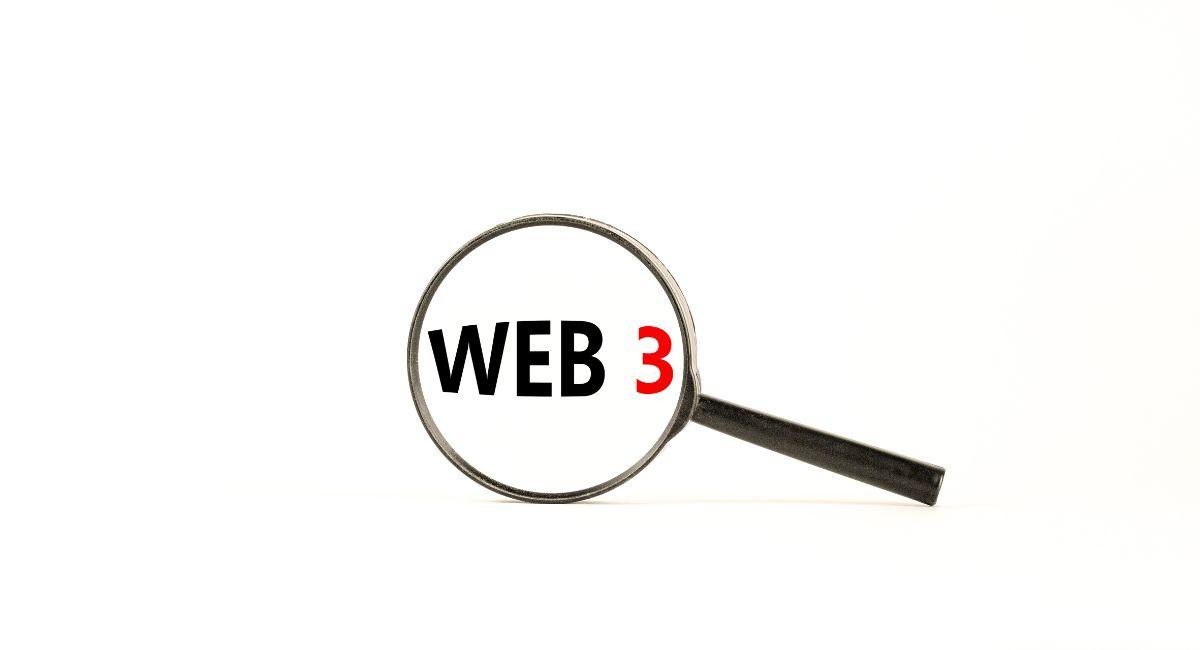Unveiling The Significance Of Web3 Technology In Blockchain Development
In the ever-evolving landscape of blockchain technology, Web3 technology has emerged as a pivotal force reshaping the way we perceive and interact with decentralized systems. This paradigm shift has profound implications for blockchain development, unlocking new possibilities and addressing existing challenges. This article delves into the reasons why Web3 technology is gaining paramount importance in the realm of blockchain.
Understanding Web3 Technology:
Web3 represents the third era of the internet, characterized by decentralization, interoperability, and user-centric principles. Unlike its predecessors, Web1 (the static web) and Web2 (the social web), Web3 aims to create a trustless and open internet where users have greater control over their data and interactions.
Top 10 Ways web3 technology is helping in blockchain development

- Decentralization Redefined: Web3 technology is set to redefine the concept of decentralization in blockchain development. Unlike traditional centralized models, Web3 leverages blockchain’s distributed ledger to eliminate single points of failure, censorship, and the need for intermediaries. This paradigm shift ensures greater resilience, security, and transparency in the blockchain ecosystem.
- Interoperability as the Cornerstone: One of the key strengths of Web3 is its emphasis on interoperability. In the coming years, blockchain developers will increasingly leverage protocols and standards that allow different blockchain networks to seamlessly communicate and transact with each other. This interconnectedness will foster collaboration, expand the scope of decentralized applications (DApps), and create a more cohesive blockchain landscape.
- Enhanced User Control and Privacy: Web3 technology places a strong emphasis on returning control over data and digital identities to users. Blockchain-based authentication and decentralized identity solutions will empower individuals to manage and control their personal information securely. This shift not only enhances privacy but also reduces the reliance on centralized entities for identity verification, providing users with greater autonomy.
- Smart Contracts Evolving: Smart contracts, a cornerstone of blockchain development, will evolve with the widespread adoption of Web3. These self-executing contracts with programmable conditions will become more sophisticated, enabling complex agreements to be executed seamlessly on the blockchain. The programmability of smart contracts will lead to more efficient, trustless, and automated transactions.
- Programmable Money and Financial Innovation: Web3 introduces the concept of programmable money, allowing developers to embed rules and conditions directly into digital currencies. This capability opens the door to a new era of financial innovation, where blockchain developers can create novel financial instruments, automate complex financial processes, and enhance the efficiency of the global financial system.
- Tokenization Revolutionizing Assets: The tokenization of assets is a game-changer brought about by Web3. In the coming years, blockchain developers will leverage this capability to convert real-world and digital assets into blockchain-based tokens. This not only democratizes ownership but also introduces liquidity to traditionally illiquid markets, reshaping industries such as real estate, art, and intellectual property.
- Decentralized Finance (DeFi) Maturation: The maturation of decentralized finance is intrinsically tied to the advancements in Web3 technology. As Web3 principles become more ingrained in blockchain development, DeFi applications will evolve to offer more sophisticated and user-friendly financial services. This includes decentralized lending and borrowing, yield farming, and innovative financial products accessible to a global audience.
- Decentralized Autonomous Organizations (DAOs) Flourishing: Web3 technology facilitates the creation and management of Decentralized Autonomous Organizations (DAOs). In the coming years, we can expect a proliferation of DAOs across various industries, allowing for decentralized governance and decision-making. These organizations, governed by smart contracts and community consensus, will redefine how businesses and communities operate.
- Cross-Chain Collaboration: The future of blockchain development lies in cross-chain collaboration facilitated by Web3. Blockchain developers will increasingly focus on creating solutions that enable seamless interaction and data transfer between different blockchain networks. This interoperability will break down silos, promote cross-chain asset transfers, and foster a more connected and efficient blockchain ecosystem.
- Sustainability and Green Blockchain Development: With environmental concerns gaining prominence, Web3 technology will drive the development of more sustainable and eco-friendly blockchain solutions. This includes the adoption of consensus mechanisms with lower energy consumption, the exploration of proof-of-stake models, and a general commitment to greener practices in the blockchain space.
The impact of Web3 technology on blockchain development in the coming years is multifaceted, ranging from enhanced decentralization to the maturation of financial systems and the proliferation of decentralized applications. The evolving landscape will undoubtedly bring about a more interconnected, user-centric, and innovative blockchain ecosystem.
How Web3 technology is solving major blockchain issues?

Web3 technology is emerging as a transformative force in the blockchain space, addressing several critical issues that have historically challenged the adoption and scalability of blockchain systems. Here’s a detailed exploration of how Web3 is effectively solving these major blockchain issues:
- Scalability Challenges: Traditional blockchains, like Bitcoin and Ethereum, often face scalability issues, resulting in slow transaction processing times and higher fees during peak demand. Web3 addresses this challenge by introducing layer 2 solutions and sidechains. These off-chain scaling solutions enable faster and more cost-effective transactions, improving overall scalability and user experience.
- Interoperability Gaps: Interoperability, or the lack thereof, has been a significant hurdle for blockchain ecosystems. Web3 is designed to enhance interoperability by promoting common standards and protocols. Through technologies like cross-chain bridges, atomic swaps, and standardized communication protocols, Web3 enables seamless interaction between different blockchain networks, fostering a more interconnected and collaborative ecosystem.
- User-Friendly Interfaces: Blockchain applications have often been criticized for their complexity, deterring mainstream adoption. Web3 focuses on creating more user-friendly interfaces and experiences. This includes decentralized applications (DApps) with intuitive designs, easy onboarding processes, and improved user experiences, making blockchain technology more accessible to a broader audience.
- Energy Efficiency Concerns: The energy consumption associated with traditional proof-of-work consensus mechanisms, as seen in Bitcoin and some early blockchains, has raised environmental concerns. Web3 addresses this by exploring alternative consensus mechanisms, such as proof-of-stake (PoS), which significantly reduces energy consumption. This shift towards greener protocols aligns with the growing global emphasis on sustainable and eco-friendly blockchain solutions.
- Centralization Risks: Some blockchains have faced challenges related to centralization, as a few powerful entities or mining pools may dominate network activities. Web3 employs decentralization as a core principle, leveraging blockchain’s distributed ledger technology to eliminate single points of control. This ensures a more decentralized and resilient network, reducing the risk of censorship and manipulation.
- Data Privacy and Security: Web3 enhances data privacy by putting users in control of their digital identities and personal information. Decentralized identity solutions, coupled with blockchain-based authentication, provide users with a secure and private way to manage their data. This shift reduces reliance on centralized entities for identity verification, mitigating the risks associated with large-scale data breaches.
- Lack of Standardization: The absence of standardized protocols and frameworks has hindered the seamless integration of various blockchain systems. Web3 aims to establish common standards for smart contracts, tokenization, and communication protocols. This standardization facilitates interoperability, allowing developers to create applications that can easily interact with different blockchain networks.
- Smart Contract Security: Smart contracts are susceptible to vulnerabilities and security breaches if not implemented correctly. Web3 addresses this by emphasizing the importance of secure coding practices and auditing mechanisms. Additionally, advancements in smart contract languages and formal verification tools contribute to building more secure and robust smart contract systems.
- Tokenization Challenges: Tokenization, while a powerful concept, has faced challenges related to regulatory compliance and interoperability. Web3 addresses these issues by working towards standardized tokenization protocols and compliance frameworks. This ensures that tokenized assets adhere to regulatory requirements while also promoting seamless transferability across different blockchain networks.
- Community Governance: Governance in blockchain projects has been a point of contention, with centralization often leading to decision-making challenges. Web3 introduces decentralized autonomous organizations (DAOs) and community-driven governance models. These mechanisms empower users to participate in decision-making processes, fostering a more democratic and inclusive approach to project governance.
In summary, Web3 technology is a pivotal force in overcoming the major challenges that have hindered blockchain adoption. Through a combination of improved scalability, interoperability, user-friendliness, and a commitment to sustainability and security, Web3 is driving the evolution of blockchain technology towards a more mature, accessible, and resilient future.
In 2022, 46% of finance apps were based on web3 technology🔥
The total value locked in DeFi protocols is over $100 billion🤑
Web3 is revolutionising the finance sector. Check out how: https://t.co/MuM4Yh5acy pic.twitter.com/NfiHFO0O2d
— Onmeta (@onmetahq) January 8, 2024
Conclusion:
Web3 technology is a catalyst for the evolution of blockchain development, ushering in a new era of decentralization, interoperability, and user empowerment. As the importance of these principles becomes increasingly evident, the adoption of Web3 is poised to reshape industries, redefine digital interactions, and lay the foundation for a more inclusive and transparent internet. Embrace the decentralized future – the era of Web3 has just begun.
Stay informed with daily updates from Blockchain Magazine on Google News. Click here to follow us and mark as favorite: [Blockchain Magazine on Google News].
Get Blockchain Insights In Inbox
Stay ahead of the curve with expert analysis and market updates.
latest from tech
Disclaimer: Any post shared by a third-party agency are sponsored and Blockchain Magazine has no views on any such posts. The views and opinions expressed in this post are those of the clients and do not necessarily reflect the official policy or position of Blockchain Magazine. The information provided in this post is for informational purposes only and should not be considered as financial, investment, or professional advice. Blockchain Magazine does not endorse or promote any specific products, services, or companies mentioned in this posts. Readers are encouraged to conduct their own research and consult with a qualified professional before making any financial decisions.

 Bitcoin
Bitcoin  Ethereum
Ethereum  XRP
XRP  Tether
Tether  Solana
Solana  Dogecoin
Dogecoin  USDC
USDC  Cardano
Cardano  Lido Staked Ether
Lido Staked Ether  TRON
TRON  Avalanche
Avalanche  Stellar
Stellar  Sui
Sui  Toncoin
Toncoin  Wrapped stETH
Wrapped stETH  Chainlink
Chainlink  Wrapped Bitcoin
Wrapped Bitcoin  Shiba Inu
Shiba Inu  Content Bitcoin
Content Bitcoin  Hedera
Hedera  Polkadot
Polkadot  WETH
WETH  Bitcoin Cash
Bitcoin Cash  LEO Token
LEO Token  Uniswap
Uniswap  Bitget Token
Bitget Token  Litecoin
Litecoin  Hyperliquid
Hyperliquid  Pepe
Pepe  Wrapped eETH
Wrapped eETH  USDS
USDS  NEAR Protocol
NEAR Protocol  Ethena USDe
Ethena USDe  Aptos
Aptos  Internet Computer
Internet Computer  Aave
Aave  POL (ex-MATIC)
POL (ex-MATIC)  Ethereum Classic
Ethereum Classic  Monero
Monero  Cronos
Cronos  Mantle
Mantle  Render
Render  MANTRA
MANTRA  Dai
Dai  Bittensor
Bittensor  Artificial Superintelligence Alliance
Artificial Superintelligence Alliance  Algorand
Algorand 




